At the stroke of midnight on January 1st, just after the Joya-no-Kane (除夜の鐘) — the ringing of temple bells on New Year’s Eve — the new year begins with greetings of people saying “Akemashite Omedetou,” meaning “Congratulations on the opening of the new year.”
While people all over the world celebrate with great joy, Japanese place more importance on starting the year with sincere feelings rooted in long tradition and history.
I have previously explained Mujō-kan (無常観) — the awareness of impermanence, that “time passes and nothing remains the same.” This Buddhist idea has deeply influenced Japanese daily behavior and expressions, as seen in Koyo (autumn leaves) and Ichigo-ichie (“once-in-a-lifetime encounter”).
Especially in January, there are many unique Japanese customs that reflect this spirit.
Prayer
Through Joya-no-Kane, Japanese people are purified of worldly desires and can greet the new year with a pure heart. They leave behind everything that happened in the past year and pray to Buddha and the gods for happiness in the coming year.
Although the number of people who identify with a specific religion is small, many Japanese still rely on invisible powers and live their lives guided by Buddhist and Shinto teachings.
初詣 Hatsu-Moude – First Visit to Temple or Shrine

Right after Joya-no-Kane rings, people line up in front of temples and shrines, waiting to pass under the sacred gate to pray for happiness in the new year. They make small monetary offerings called Osaisen (お賽銭).
This continues for the first three days of January, which is the busiest period of the year for temples and shrines.
Below are the busiest temples and shrines in Japan during the New Year period of 2025
(Source: Jorudan Co., Ltd. https://sp.jorudan.co.jp/newyear/rank_visitor.html, estimated number of visitors in the first three days):
| Shrine/Temple | Location | Estimated Visitors (2025) |
|---|---|---|
| Meiji Jingu | Tokyo | 3,100K |
| Naritasan Shinshoji Temple | Chiba | 3,000K |
| Sensoji Temple | Tokyo | 2,960K |
| Atsuta Jingu | Aichi | 2,300K |
| Musashi Ichinomiya Hikawa Shrine | Saitama | 2,100K |
Would you like to experience Japan’s traditional Hatsu-Moude at a famous shrine with a local guide? Join a New Year temple and shrine tour to discover the meaning behind this beautiful ritual.
👉 Explore Shrine Tours and Cultural Experiences
祈祷 Kito and お守り Omamori
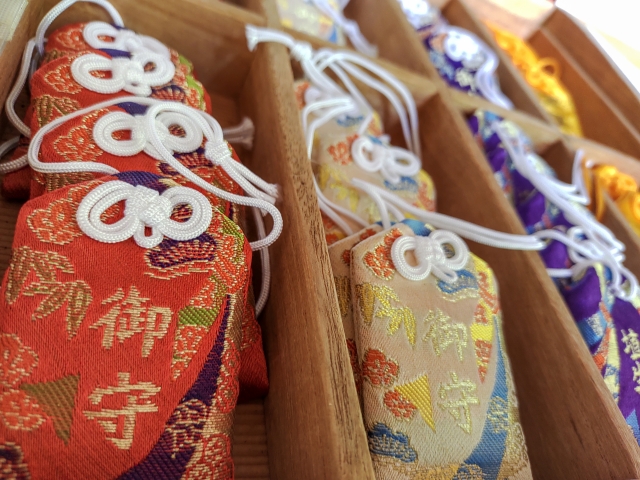
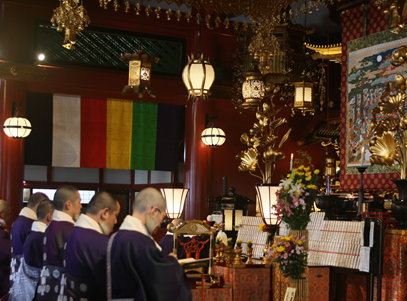
Visitors to temples and shrines often receive Kito (祈祷), a ceremony conducted by monks or priests in which they pray for the fulfillment of one’s wishes. Temples and shrines also provide protective talismans that people enshrine in their homes. Some people also receive Omamori (お守り), small protective charms offered at temples and shrines, and carry them in their bags or wallets for good fortune and safety.
初日の出 Hatsu-Hinode – The First Sunrise
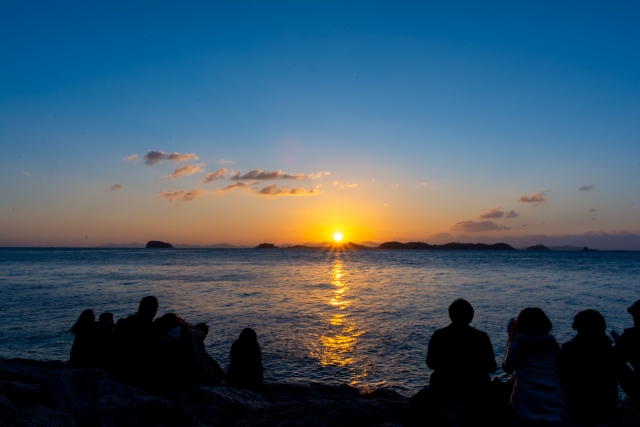
Praying to the sun — an ancient form of animism — still lives deeply in the Japanese heart. One symbolic custom is Hatsu-Hinode, watching and praying to the first sunrise of the year on January 1st. Before dawn, many people gather along the eastern seashores or on hilltops to see the first sunrise. When the sun finally appears above the horizon, they join their hands and pray for a happy new year.
You can also see similar scenes on other occasions, such as at the summit of Mt. Fuji, which holds deep spiritual meaning in Japanese life. In summer, many climbers reach the peak before dawn to see the sunrise from there.
おせち料理 Osechi-Ryori – Special New Year Cuisine
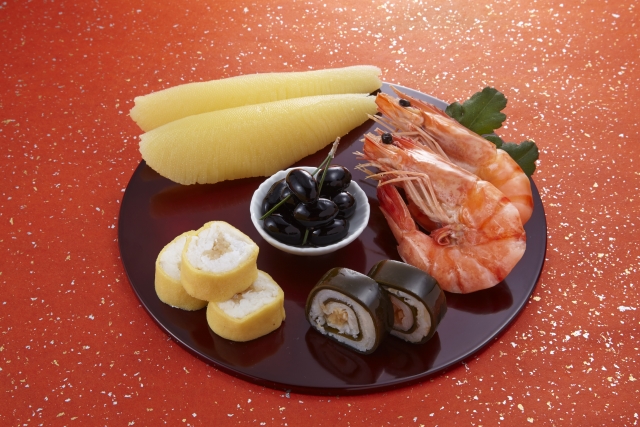
Osechi-Ryori is a traditional Japanese New Year’s cuisine. It is believed to have originated in the Yayoi Era (before the 3rd century BC) and became an official court event during the Heian Era (8th–13th century).
Originally, it was an offering to the gods to celebrate the new year, wishing for a life without hardship. This custom spread among ordinary people during the Edo period (17th–19th century).
Each dish has its own symbolic meaning, such as:
Symbolic Dishes and Meanings
| Dish | Meaning |
|---|---|
| Kazunoko (数の子)–Herring roe | symbolizes prosperity of descendants and family fortune. |
| Tazukuri (田作り)– Dried young anchovies | represents a good harvest, as anchovies were once used as fertilizer for rice fields. |
| Kuro-mame (黒豆)– Black beans | “Mame” means “diligence” in Japanese, so it implies working hard and staying healthy. |
By sharing Osechi-Ryori with family members, people wish for a prosperous and happy year ahead.
If you would like to see how beautifully Osechi Ryori is presented,
you can check some traditional Osechi boxes and Japanese tableware on Amazon Japan.
🛍️ Explore Osechi Ryori sets on Amazon Japan
As an Amazon Associate, I earn from qualifying purchases.
一年の計は元旦にあり Ichinen-no-Kei-wa-Gantan-ni-Ari
(“A year’s plan starts on New Year’s Day”)
This proverb means that the plans you make on the first day of the year determine how the rest of the year will go. It is said to have originated in a Chinese book from the Ming Dynasty (14th–17th century), and another theory attributes it to the words of the warlord Mouri Terumoto (16th century).
One aspect of the Japanese mindset is to value Fushime (節目) — turning points or milestones in life. The moment the year changes is the most important Fushime of all.
Therefore, many companies hold a New Year’s ceremony to announce annual goals, and individuals also set their personal resolutions.
I, too, have the habit of setting my own goals at the beginning of the year.
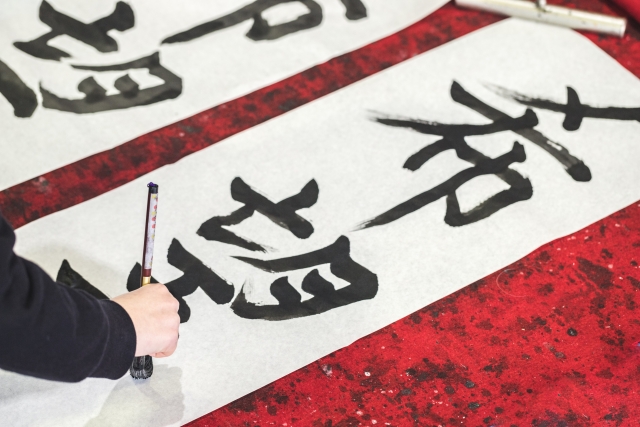
Another traditional custom, Kakizome (書初め), is an occasion to express one’s annual aspiration through calligraphy. It originated from an aristocratic ceremony in the Heian Era, where people wrote waka (Japanese poems) at the start of the year. This custom is still alive today.
If you’d like to try Kakizome or traditional calligraphy during your stay in Japan,
you can join a local workshop taught by professional calligraphers.
🖌️ Try a Japanese Calligraphy Workshop in Kyoto
Ceremonies in the New Year Period
During the New Year period, many traditional events take place across Japan.
仕事始め Shigoto-Hajime – The First Workday
After the first three days of the new year, companies resume work. On this day, many firms hold a short ceremony to announce their goals for the year and motivate employees.
出初式 Dezome-Shiki – The Firefighters’ New Year Parade
This ceremony, organized by the Fire and Disaster Management Agency, takes place in early January. It dates back to the Edo period, when volunteer fire brigades in Edo (present-day Tokyo) performed their first drills of the year.
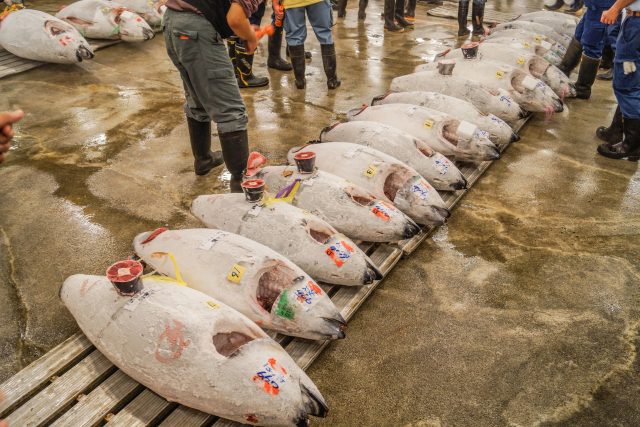
初競り Hatsu-Seri – The First Auction
The first auction of the year, often highlighted by the tuna bidding at Tokyo’s Toyosu Market (formerly Tsukiji), draws major public attention.
初売り Hatsu-Uri – The First Sale
Traditionally, shops were closed during the first three days of January, and Hatsu-Uri started on the 4th. Today, however, many stores open earlier and offer Fuku-bukuro (福袋) — sealed lucky bags filled with mystery items.
Summary
The beginning of the year is a very special time for Japanese people. We feel that everything has been purified at the end of the previous year, and we start anew with refreshed minds.
The traditional Japanese concept of Mujō-kan — the awareness of impermanence that “time passes and nothing remains the same” — deeply influences these New Year customs and behaviors.
If you visit Japan in January, you may witness this unique spiritual sense reflected in our New Year traditions.
Related posts: Customs and Rituals at the End of the Year, Shichi-Go-San: Celebration Ritual for Children, Koyo: Autumn Foliage and the Spirit of Japanese Aesthetics


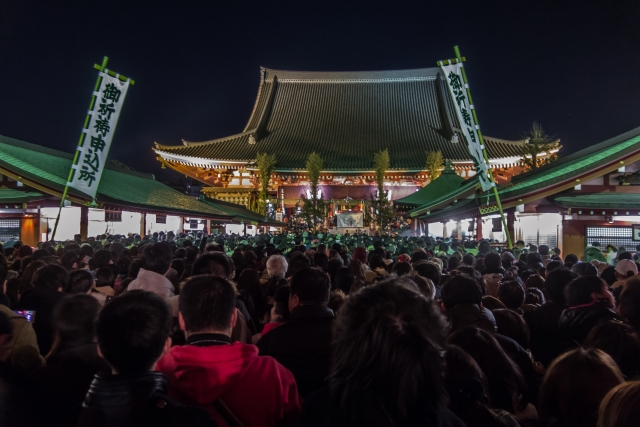


Share Your Perspective